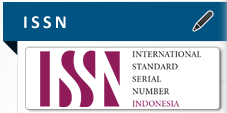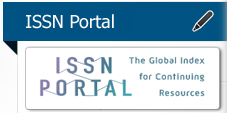PERAN BIDAN DALAM UPAYA MENURUNKAN KEHAMILAN RISIKO TINGGI MELALUI PENDIDIKAN KESEHATAN PADA IBU HAMIL
Abstract
References
Allotey, J. et al. (2020) ‘Clinical manifestations, risk factors, and maternal and perinatal outcomes of coronavirus disease 2019 in pregnancy: Living systematic review and meta-analysis’, The BMJ, 370. doi: 10.1136/bmj.m3320.
Dinkes, P. J. (2019) Profil Kesehatan Provinsi Jawa Tengah Tahun 2018.
dr. Nagisa Paramita (2022) Kehamilan Resiko Tinggi dan Faktor Penyebabnya, Nutricia Indonesia. Available at: https://www.nutriclub.co.id/article-kehamilan/kesehatan/tips-kesehatan/kehamilan-resiko-tinggi.
Farida, Y., Isnanto and I.G.A Kusuma Astuti, N. P. (2021) ‘FAKTOR-FAKTOR YANG BERHUBUNGAN DENGAN KEJADIAN PLASENTA PREVIA’, Usia2, VIII(2), pp. 14–22.
Hou, S. et al. (2021) ‘Comparison of magnetic resonance imaging of the lower uterine segment in pregnant women with central placenta previa with and without placenta accreta spectrum from a single center’, Medical Science Monitor, 27, pp. 1–10. doi: 10.12659/MSM.932759.
Jing, L. et al. (2018) ‘Effect of site of placentation on pregnancy outcomes in patients with placenta previa’, PLoS ONE, 13(7), pp. 1–11. doi: 10.1371/journal.pone.0200252.
Liu, C. ning et al. (2021) ‘Prevalence and risk factors of severe postpartum hemorrhage: a retrospective cohort study’, BMC Pregnancy and Childbirth. BMC Pregnancy and Childbirth, 21(1), pp. 1–8. doi: 10.1186/s12884-021-03818-1.
Mariyona, K. (2019) ‘Komplikasi dan Faktor Resiko Kehamilan di Puskesmas’, Jurnal Menara Medika, 1(2), pp. 109–116.
Mursalim, N. . dk. (2020) ‘ANALISIS FAKTOR RISIKO YANG BERHUBUNGAN DENGAN KEJADIAN PLASENTA PREVIA Nurulhuda’, 06(01), pp. 68–76.
Park, H.-S. and Cho, H.-S. (2020) ‘Management of massive hemorrhage in pregnant women with placenta previa’, Anesthesia and Pain Medicine, 15(4), pp. 409–416. doi: 10.17085/apm.20076.
Putri, M. E. (2019) GAMBARAN FAKTOR RESIKO KEJADIAN PLASENTA PREVIA DI RSUD PANEMBAHAN SENOPATI BANTUL YOGYAKARTA TAHUN 2016-2017.
Schilpzand, M. et al. (2022) ‘Automatic Placenta Localization From Ultrasound Imaging in a Resource-Limited Setting Using a Predefined Ultrasound Acquisition Protocol and Deep Learning’, Ultrasound in Medicine and Biology, 48(4), pp. 663–674. doi: 10.1016/j.ultrasmedbio.2021.12.006.
Senkoro, E. E. et al. (2017) ‘Frequency, Risk Factors, and Adverse Fetomaternal Outcomes of Placenta Previa in Northern Tanzania’, Journal of Pregnancy, 2017, pp. 7–11. doi: 10.1155/2017/5936309.
Susanti, E. et al. (2020) ‘KARTU SKOR PUJI ROCHYATI (KSPR) DALAM UPAYA SCREENING KEHAMILAN IBU RESIKO TINGG’, 2, pp. 1–9.
Widarta, G. D. et al. (2015) ‘Deteksi Dini Risiko Ibu Hamil dengan Kartu Skor Poedji Rochjati dan Pencegahan Faktor Empat Terlambat’, Majalah Obstetri & Ginekologi, 23(1), p. 28. doi: 10.20473/mog.v23i1.2100.
Wojtowicz, A. et al. (2021) ‘Hypoplastic left heart syndrome: from the prenatal to the postnatal period’, Ginekologia Polska, 92(4), pp. 289–299. doi: 10.5603/GP.a2021.0160.
Zhang, L. et al. (2020) ‘Effect of previous placenta previa on outcome of next pregnancy: A 10-year retrospective cohort study’, BMC Pregnancy and Childbirth. BMC Pregnancy and Childbirth, 20(1), pp. 1–8. doi: 10.1186/s12884-020-02890-3.
DOI: https://doi.org/10.26751/jai.v4i1.1414
Jurnal Abdimas Indonesia indexed by
Published by LPPM Universitas Muhammadiyah KudusJl. Ganesha Raya No.I, Purwosari, Kec. Kota Kudus, Kabupaten Kudus, Jawa Tengah 59316

This work is licensed under a Creative Commons Attribution-ShareAlike 4.0 International License.





